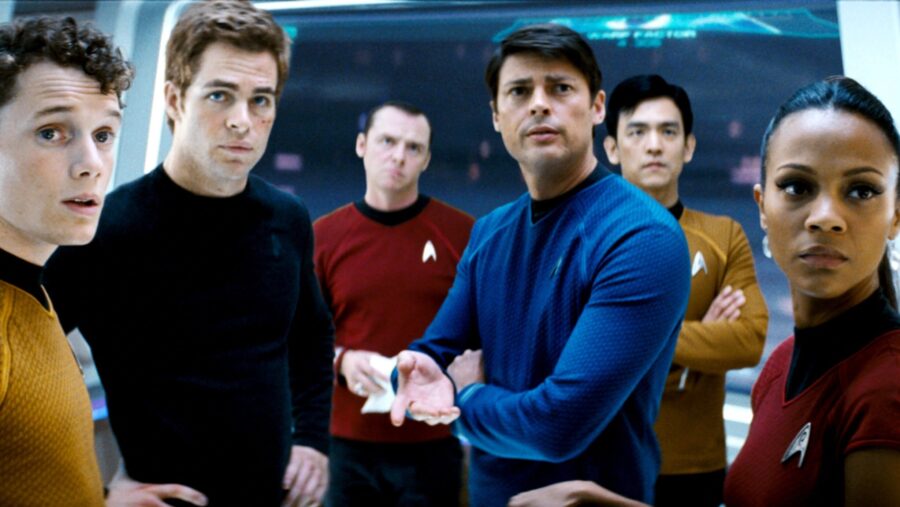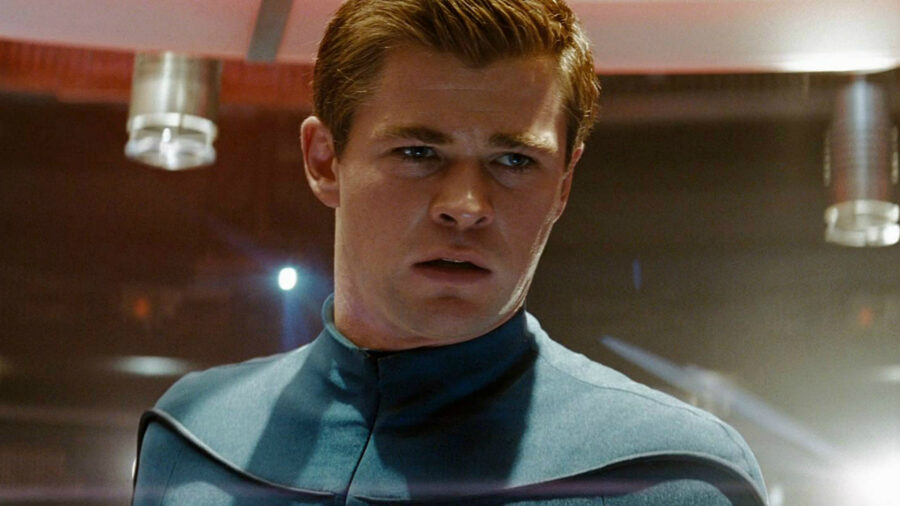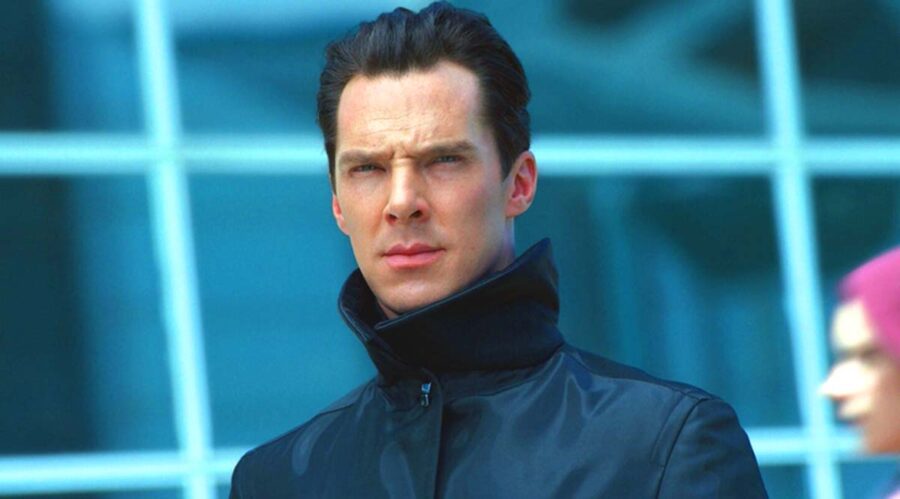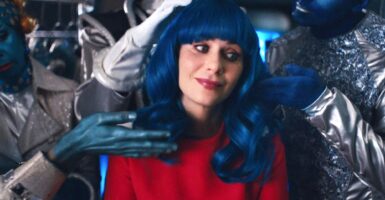What Is The Kelvinverse In Star Trek?
Star Trek's Kelvinverse in an alternate universe with significant differences from the prime Star Trek timeline.
This article is more than 2 years old

Ever wonder why the events of 2009’s Star Trek and its sequels are rarely if ever mentioned in more recent shows like Star Trek: Discovery? That’s because the most recent film trilogy is part of the Kelvin Timeline or Kelvinverse — a timeline in which things worked out differently than in the Prime Star Trek narrative. The timeline is created in 2009’s Star Trek when a time traveling Romulan mining ship destroys the U.S.S. Kelvin, killing James T. Kirk’s father and forever altering that universe’s history.
In 2387 the Romulan sun goes supernova, destroying the Romulan homeworld and killing everyone on it. Spock (Leonard Nimoy) has a plan to artificially create a black hole that would absorb the energy from the supernova, but he arrives too late to save Romulus. His plan stops the supernova from expanding further and it also sucks Spock’s ship and the Romulan mining vessel The Narada inside, spitting them out in the past.
The Narada is captained by the vengeful Nero (Eric Bana), whose direct actions lead to the creation of the Kelvinverse. The Narada emerges from the black hole in 2233, just as the phenomenon is being investigated by the U.S.S. Kelvin. Nero immediately attacks the smaller and less advanced Kelvin.
George Kirk’s (Chris Hemsworth) order to abandon ship saves hundreds of Kelvin’s crew, including his wife and newborn son, though the ship doesn’t survive and neither does the elder Kirk. Hence, the Kelvinverse is born.

The biggest and most immediate difference between the Prime Trek timeline and that of the Kelvinverse is the destruction of Vulcan. Nero blames the Federation for the destruction of Romulus as well as the deaths of his wife and son, and while he’s ultimately defeated, he does succeed in using his Romulan mining vessel to destroy Vulcan. Meanwhile in the prime timeline we know Vulcan is around as late as the 32nd century — as seen in Discovery — though it has been renamed Ni’Var and is now the homeworld to both Vulcans and Romulans.
Another of the larger differences between the Kelvinverse and that of the Prime Trek narrative is that Nero’s attack inspires Starfleet to shift its focus from exploration to defense. In 2013’s Star Trek Into Darkness, we learn that Starfleet’s clandestine group Section 31 has discovered the adrift Botany Bay — around 6 or 7 years before the Prime Enterprise would discover it in the original series episode “Space Seed” — and is employing the genetically enhanced Khan Noonien Singh (Benedict Cumberbatch) to help Starfleet develop new weapons.
This is a hard right turn from not only how the Starfleet of the Prime Trek timeline treats Khan (Ricardo Montalban), but how Starfleet handles any genetically enhanced individuals. Prejudice against the genetically enhanced is often depicted as the last remaining bastion of bigotry in the Federation. In Star Trek: Deep Space Nine, Alexander Siddig’s Julian Bashir faces dismissal and possible imprisonment when it’s discovered he’s genetically enhanced, and in the Season 1 finale of Star Trek: Strange New Worlds, Una Chin-Riley (Rebecca Romijn) is arrested and pulled off the Enterprise when Starfleet discovers she’s likewise genetically enhanced.

Because of the events of Star Trek Into Darkness, those of 1982’s Star Trek II: The Wrath of Khan could never unfold in the Kelvinverse. Since their events lead immediately from those of The Wrath of Khan, neither Star Trek III nor Star Trek IV could happen in the alternate timeline either. Considering Starfleet’s more defense-oriented stance, it seems unlikely 1991’s Star Trek VI: The Undiscovered Country would take place there either, since the story deals with an attempt to forge a lasting peace between the Federation and the Klingon Empire.
There are other, smaller differences between the Prime Trek narrative and that of the Kelvinverse; some of which are easier to explain than others. For example, the Kelvin version of Christopher Pike (Bruce Greenwood) is murdered by Khan in Star Trek Into Darkness while, considering how his strange fate unfolds in the original series episode “The Menagerie,” we actually don’t know if the Prime version of the character ever dies.
In the Kelvinverse we see an early romance bloom between Spock (Zachary Quinto) and Nyota Uhura (Zoe Saldana) which never takes place in Prime Trek as far as we know. Also, Star Trek Into Darkness reveals that the Kelvin Hikaru Sulu (John Cho) is in a same sex relationship, while George Takei (per The Hollywood Reporter) has gone on record that the version of Sulu he played in the original series was straight. How either of these changes are a result of the destruction of the U.S.S. Kelvin is a mystery.










